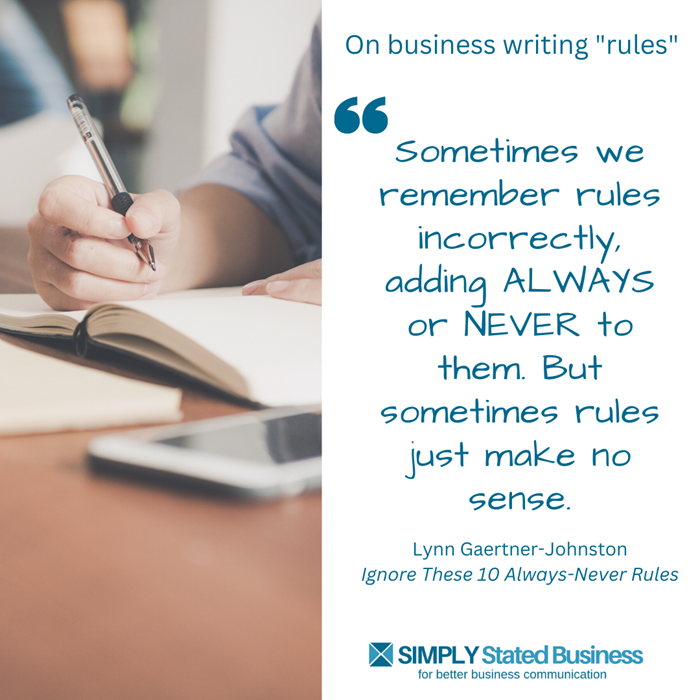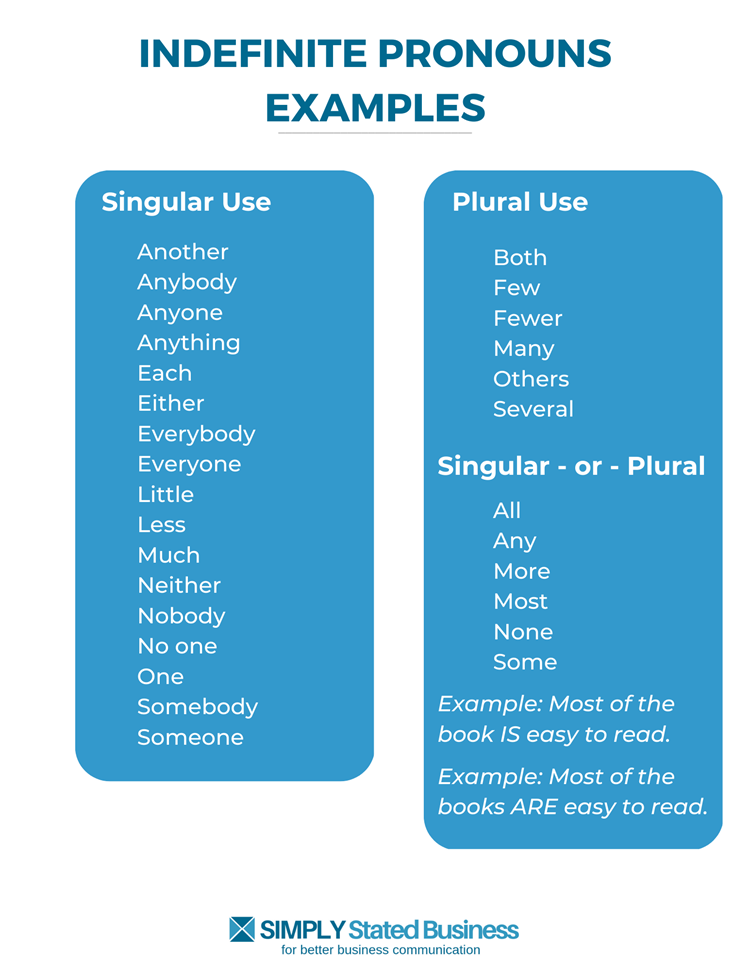 Do you wish you had one last shot to get your business writing right?
Do you wish you had one last shot to get your business writing right?
Developing a checklist is a simple way for polishing diamonds in the rough.
The following is a sample business writing checklist that’s as simple as A-B-C.
- Accurate
- Brief
- Clear
Psst….If you hate details, CLICK HERE for a one-page checklist.
Business Writing Checklist
Accurate
Have you grown weary of the term fake news? I don’t know which is worse. The overused phrase or the effort it takes to expose it. Although fact-checking sites love its existence.
However, inaccurate business writing takes many forms. The checklist narrows the items into four categories. You can add or delete the categories that make the most sense to you.
1. Spelling
Have you experienced the wrath of the grammar and typo patrol who troll the internet exposing inaccuracies? Wouldn’t you rather use a different checkpoint?
Fortunately, multiple tools exist for spellcheck.
- The squiggly red line that shouts, hey, check this out.
- Editing tools like those in Microsoft Word, Google Docs, Grammarly, Pro Writing Aid
- Human spelling pros like the doesn’t miss a thing coworker or professional editor
If you’re like me, you tend to repeat the same misspelling or typo. Some of the more common ones include:
- Their versus there (or they’re)
- Affect versus effect
- Lose versus loose
- It’s versus its
If you know you fall victim to a certain misspelling or typo, add it to your checklist.
2. Grammar
The fascinating thing about grammar is the passion behind it. The grammar patrols believe their version is the only course.
Lynn Gaertner-Johnston founded Business Writing Blog. She has since retired and sold the blog and her business writing courses. I always loved this quote from Lynn about rules.

Although we need to relax, I do respect the rules. I view some as guidelines, others as rules, but all with one goal in mind – making business writing better.
The following are examples of common grammar goofs that improve with slight adjustments.
Shift in tense
A shift in tense occurs when you combine past, present and/or future verbs. In the example below, watched is past tense. Chased is also past tense but the sentence shifted its tense to chases (present tense).
Example
- The dog watched the car drive by and then the dog chases it.
- Substitute chased (past tense) for chases (present tense) so the sentence is consistent with watched.
- The dog watched the car drive by and then the dog chased it.
Vague pronoun reference
You know who you mean, but does your reader? Vague pronouns are another common misstep.
Example
- I don’t think they should allow slam dunks in basketball. (Who are they?)
- Substitute = I don’t think the NBA should allow slam dunks in basketball
Pronoun shifts
Another common stumble is starting with one type of pronoun, and then shifting to another.
Example
- We enjoyed the concert. You heard great music.
- Substitute we for you – We enjoyed the concert. We heard great music.
Pronoun shifts get tricky with an indefinite pronoun, such as neither, nobody, anyone, anybody. As I get *ahem* older, I find this pronoun use more challenging.
Example
The pronouns in bold are singular, so the sentence should have a singular verb.
- Instead of: Neither of the boys brought their baseball glove.
- Substitute his for their – Neither of the boys brought his baseball glove
Below is an illustration of indefinite pronouns. You can also download a PDF version for your personal use.
TIP: Pronouns ending in …one (anyone, someone, everyone, one) are singular. Also, if it has a body, 😉 (somebody, nobody, everybody), it’s singular.

3. Punctuation
Punctuation problems tend to come in two forms – excessive use or missing in action.
While blogs tend to have a more relaxed approach to punctuation, other forms of business communication need a punctuation check.
Comma
Here are a few examples for using commas. I am certain readers will have a wide array of opinions on proper use.
- Use after an introductory phrase – After reading the book, Mary had her answer.
- To join two independent clauses – I know studying is difficult, but it is necessary.
- With three or more words or phrases in a series – The speaker provided tips on spelling, grammar, and punctuation.
- Before and after a phrase that is not essential to a sentence – The Rolling Stones concert, which took place on Monday, sold out.
Commas sometimes pop up in the strangest places. The following are examples of comma abuse.
Examples
- My brother works on computers, and printers. Computers and printers are not independent clauses. Eliminate the comma.
- My brother loves computers, he’s an expert. These are two complete sentences. Using a comma to join two complete sentences (known as a comma splice) is incorrect. Substitute a period and make two sentences (or use a semicolon – see the next topic).
Semicolon
The little brother of the comma is the semicolon. Little Bro likes to separate two related clauses.
Look at the clauses. If each could be a complete sentence, insert a semicolon between the two clauses.
Example
- She lost her purse; she was frantic.
- The above example could also be two separate sentences.
4. Statistics/Numbers
Have you ever transposed numbers on a sale price or report statistic? Inaccurate numbers or statistics could prove costly.
These nasty figures trip up number nerds as well as those who are number-challenged. So, check statistics and numbers for accuracy.
- Make sure you do not misinterpret results.
- Did you enter numbers accurately?
- Are product prices correct?
In my insurance broker days, we had the “numbers” people who could spot an error from across the room. I was not blessed with such a gift. I had to pay close attention for typos or calculation errors.
Which camp do you reside in? If you’re like me, try running your data by a known “numbers” person.
Brief
Content is not king – brevity is. Unfortunately, attention spans grow shorter. Personally, I find that sad. But we all must adjust to be heard.
If you need all the details, try summarizing key points for the scanners and leave the details for those who want them.
Cut out the excess
While writing like you talk works in some scenarios, extra words bog down your message and confuse readers.
Examples of words ripe for cutting include basically, just, really, kind of, sort of, like, generally, very. Yes, I know how REALLY bad I am at this. At least on this blog.
Examples
- I love all kinds of jewelry versus I love jewelry.
- Change: I just love cookies to I love cookies.
Eliminate redundancy
Using redundant words is easy to do. I fall prey to this repeat offender.
Examples
- Basic fundamentals – Haven’t met a fundamental that wasn’t basic.
- Absolutely essential – Yep, it’s absolutely, positively essential.
- Brief summary – Isn’t brevity the reason for a summary?
- Exact same thing – Exactly!
- End result – Wonder if there is a beginning and a middle result.
- Free gift – If it’s not free, it’s not a gift
- Sudden impulse – Can you plan an impulse?
Download a more extensive list of redundant words.
Clear
Clear business writing keeps readers focused on your message. Try to eliminate distractions from your message. The following seven tips help.
- Does your content support your attention-grabbing headline?
- Make your point in the opening paragraph.
- Use one idea per paragraph.
- Vary your sentence length.
- Use subheadings and bullet points.
- Explain technical terms/acronyms.
- Avoid industry jargon.
Passive Voice
The use of passive voice is a style error with the potential for losing readers from the lack of zing.
If you had an English teacher or editor obsessed with passive voice, you recognize its importance (at least to some people).
Example
- Mistakes were made by most of us.
- Move from passive to active voice – Most of us made mistakes.
A Simple Business Writing Checklist – Please!
If you made it through this post – congratulations!
You improve your business writing by ensuring it has three elements.
- A – The content is accurate.
- B – Its style is brief.
- C – Your message is clear.
Customize the checklist to meet your needs. What would you add to your writing checklist? Share your tips in Comments.
Note: This post originally published on February 22, 2012. This January 30, 2023 version updates it.
==================================
Helping you keep your business communication simple, clear, and uniquely yours.
==================================

Nice checklist, Cathy! I especially love #4. As a numerically challenged person, I’m prone to keeping the calculator app pinned to my task bar. It came in handy this week when I realized I was promising a discount that was actually bigger than what I’d advertised. Don’t want to miss that promotion!
Great piece Cathy. I’m glad we agree on comma use for lists: a, b, and c. Many people don’t include that final comma, but I always do.
Thanks, Lori & John-our internet connection is down so I am doing this on that teeny, tiny smartphone screen. Definitely not good for boomer eyes so forgive any missing punctuation or errors in spelling. 🙂
Thanks for the nice comments.
Great list, Cathy – another must-read for all writers. Not sure I agree with you and John on the use of that last comma. I was always taught not to put a comma before ‘and’ (maybe it’s a British vs American thing?) I do it for my American clients, though and anywhere that it adds to clarity.
Thanks, Sharon. I’ve heard it both ways. There are several punctuation “rules” that seem to have more than one way to do things. It can drive purists crazy. 🙂
Ah, the ol’ “serial comma” debate. I’ve been in too many situations where editors demanded it or scorned it to count.
I personally tend to prefer it for clarity, but let’s be real—only a true grammar scold gets too worked up about it.
Good reminders and a solid list, Cathy!
Hi Jake: There’s always the danger when you get into grammar and punctuation discussions that you are going to step on someone’s nerve. 🙂
As a decidedly NON-grammar scold (♥ that!), I have a more accepting reaction to a comma gone missing.
Thanks for sharing your thoughts, Jake.
Brevity is the exact opposite of what most people aim for with writing. More often they try to add a bunch of useless words just to fill some predetermined quota. Brevity is king, yes.
Ah, David-a man after my own heart. 🙂 Thanks for stopping by.
I agree with the brevity point. I help people write sales scripts a lot and they always put too many words in them. It makes a huge difference. Excellent checklist! – Kris
Hi Kris-thanks for the kind words and I agree – brevity is where it’s at. 🙂
Thanks for stopping by.
Great article, many people tend to write lengthy checklists that don’t help them. I agree that keeping it concise and brief is the best.
Glad you enjoyed it. 🙂